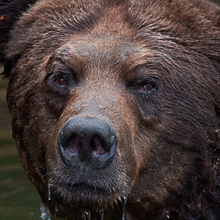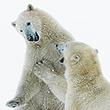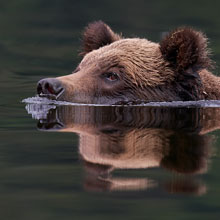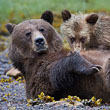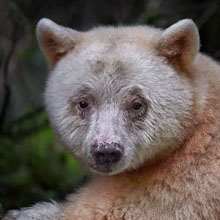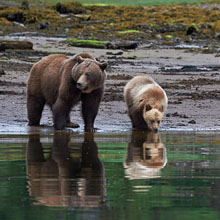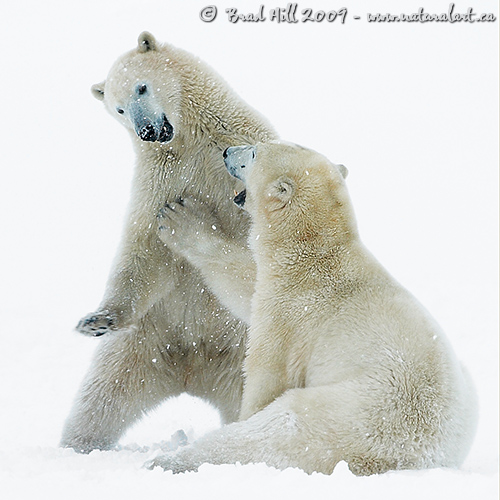
In the Field
C'mon, Give it a Break! Polar Bears Sparring - Almost. Cape Churchill, MB, Canada. October 24, 2004.
I captured this image at the end of a very long sparring session between these two male polar bears. During the bulk of the bout, both bears were up on their feet. Eventually though, the bear closest to me appeared to approach exhaustion and sat down and sparred only half-heartedly! It was almost as though this guy was saying "...c'mon, give it a break for a few minutes."
Like with the image "Spirit of the Tundra", I'm often asked whether or not I removed the background in this image and, if so, how. The answer is simple - I did not modify the background (or foreground) in this image in any way. I shot this image during a heavy snowfall that was accompanied by high winds (AKA a blizzard!) - there was NO detail in the background or the foreground. The "trick" in processing this image was in adjusting the midtone contrast. There are many ways to do this (during the raw conversion phase of image processing or within Photoshop) - in this case I chose to use the midtone contrast adjustments within the Shadow/Highlight dialog box of Photoshop.
Behind the Camera
C'mon, Give it a Break! Polar Bears Sparring - Almost. Cape Churchill, MB, Canada. October 24, 2004.
Digital Capture; Compressed RAW (NEF) format; ISO 200.
Nikon D2H with Nikon 200-400 mm f/4G ED-IF AF-S VR lens @ 360 mm (540 mm equivalent with digital conversion factor) supported on bean bag.
1/500s @ f5; +1 stop exposure compensation from matrix-metered exposure setting.
At the Computer
C'mon, Give it a Break! Polar Bears Sparring - Almost. Cape Churchill, MB, Canada. October 24, 2004.
RAW Conversion to 16-bit TIFF, including first-pass sharpening, using Phase One's C1 Pro.
All further digital correction using Adobe's Photoshop CS, including selective mid-tone contrast adjustment (using Photoshop's Shadow/Highlight tool), selective saturation enhancement, and selective sharpening for web output.
Conservation
C'mon, Give it a Break! Polar Bears Sparring - Almost. Cape Churchill, MB, Canada. October 24, 2004.
Ten percent of the revenue generated by this image will be donated to the Yellowstone to Yukon Conservation Initiative.
Species Status in Canada*: Special Concern (November 2002).
Polar Bears (Ursus maritimus) are the largest terrestrial carnivores on the planet and the most carnivorous of all bears. They are highly specialized and feed almost exclusively on Ringed Seals. Polar Bears hunt their prey from ice sheets and are dependent upon these ice sheets for their survival.
Like any highly-specialized organism, Polar Bears are highly susceptible to habitat alteration. Climate change - natural or human-induced - is probably the greatest long-term threat to Polar Bear survival. The longer ice-free seasons experienced in the southern reaches of their distribution is already making it difficult for them to hunt.
The Yellowstone to Yukon (Y2Y) Conservation Initiative seeks to ensure that the world-renowned wilderness, wildlife, native plants, and natural processes of the Yellowstone to Yukon region continue to function as an interconnected web of life, capable of supporting all of its natural and human communities, for current and future generations.
For more information on the status of Polar Bears in Canada, go to: http://www.speciesatrisk.gc.ca and search under "Polar Bears".
*as determined by COSEWIC: The Committee on the Status of Endangered Wildlife in Canada


















